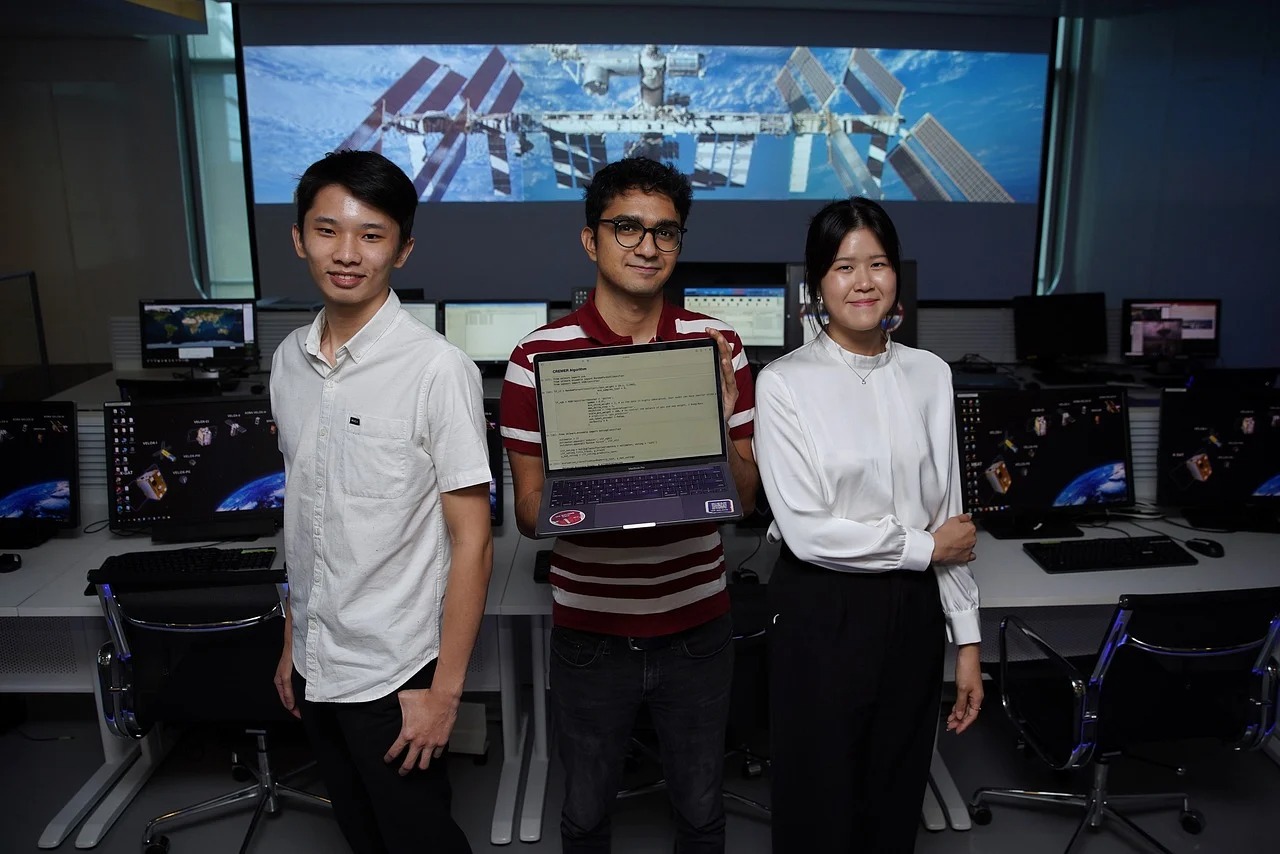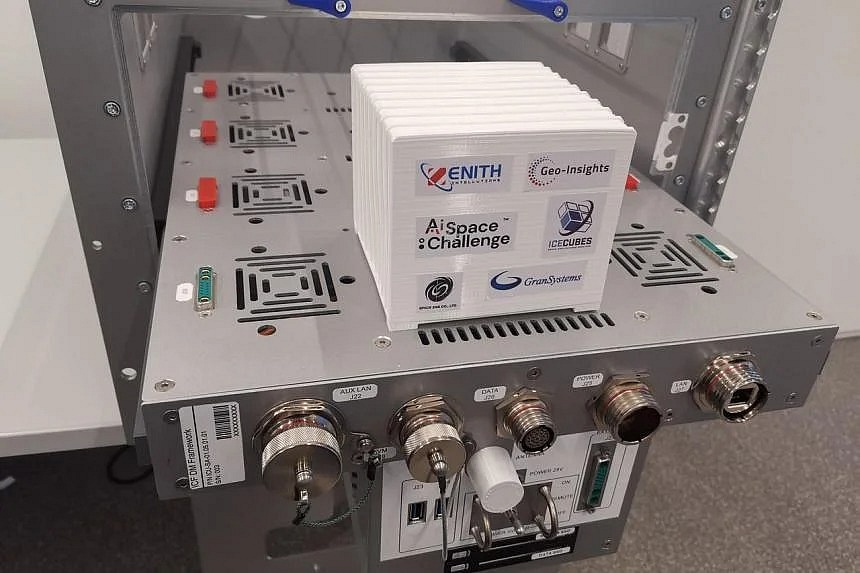NTU students to send machine learning software to International Space Station
Sign up now: Get ST's newsletters delivered to your inbox

(From left) NTU students Eng Chong Yock, Archit Gupta and Sim See Min are part of the team sending its software to the ISS.
ST PHOTO: JASON QUAH
Follow topic:
SINGAPORE - Five Nanyang Technological University (NTU) students have achieved the next best thing to being on the International Space Station (ISS) - their machine learning software is going up to the home of astronauts for three months later this year.
The students will be running the show from their laptops - testing the software, which was built to predict hardware disruptions on the ISS, satellites or other spacecraft. Such disruptions can cause these space vehicles to go off course or crash, in the worst outcomes.
Called single event upsets, these hardware disruptions tend to afflict sensitive electrical components in space, such as memory devices on semiconductors.
The disruptions happen when highly charged particles from the sun or nearby constellations strike such sensitive electronics.
Energised solar particles tend to come from sunspots and large explosions from the sun's surface that release radiation.
"The space environment is very hostile towards electronic devices," said Mr Eng Chong Yock, 22, a first-year student at NTU's School of Electrical and Electronic Engineering and one of the team members who built the software, called Cremer.
The students see the predictive solution software as their contribution to protecting the trove of space experiment data that is electronically stored in the ISS. The space station is a giant orbiting lab for astronauts to regularly conduct research in areas such as human health and growing crops in space, as well as biomedical studies.
Between 2000 and 2020, astronauts conducted nearly 3,000 experiments on the ISS.
NTU team member Archit Gupta, 20, a second-year student from the School of Computer Science and Engineering, said: "The purpose of the ISS is to collect experimental data, and if (single event upsets) happen, then the sanctity of the data gets compromised and the experiment is wasted."
Cremer was named after an existing software called Creme, which also addresses single event upsets.
Mr Gupta said: "We wanted to build a better version of it, and hence we named it Cremer."
The NTU team is getting to test its machine learning model in the ISS after it emerged as the champion at a competition earlier this month, which called upon tertiary students in South-east Asia and Taiwan to develop innovative ways to use artificial intelligence for space applications.
The competition, called AI Space Challenge, was organised by four space tech companies - including the home-grown Zenith Intellutions, a firm that provides consultancy services for advanced satellite development and related technologies.
The other members of the NTU team are third-year business student Sim See Min, 22, third-year mechanical engineering student Deon Lim, 24, and second-year electrical and electronic engineering student Rashna Ahmed, 21.
Ms Sim, who is specialising in analytics, said the team members complemented one another well.
She said: "Archit was more familiar with coding and algorithms. Chong Yock, Rashna and Deon are more familiar with electrical engineering and physics. I helped to add value during the pitching part of the competition."

The ISS and other space vehicles are equipped with safeguards and other hardware to shield against or reverse hardware disruptions when they happen. But predictive tools like Cremer are not as common.
Cremer could enhance the suite of solutions available to combat such disruptions, added Mr Gupta.
Software solutions are also cheaper and scalable compared with hardware solutions that need to be tested in space for years before they can be commercialised.
Mr Tan Cheng Hai, a consultant at Zenith Intellutions, said that prediction tools are more important for unmanned space vehicles, as the advance warning will help engineers on the ground activate safeguards.
During the competition, which started in October last year, the NTU team showcased Cremer's potential to identify and predict incoming single event upsets using data from a satellite launched by the University of Stuttgart in Germany.
Mr Gupta said the machine learning model is flexible, and can be trained and fed with ISS data to predict any hardware disruptions on the space station.
Cremer will be sent up to the ISS for three months, and the mission is planned to be completed by the end of this year.
The software will be installed in a tiny supercomputer on the space station, which comes in the form of a 10cm by 10cm white cube. Called AI Box, it is one of the world's smallest supercomputers and is produced by a Belgian company.
Before Cremer is sent up to the ISS via radio communications, the software will be plugged into a "rehearsal" AI Box in Belgium, to ensure it passes safety and security checks before it reaches space. The team will also use that time to fine-tune and optimise the software.

